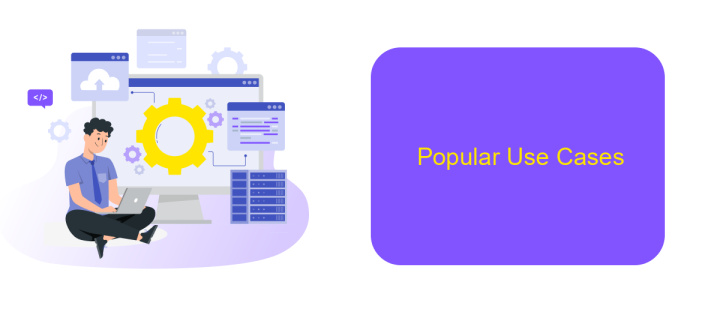Snaplogic What is
SnapLogic is a leading integration platform as a service (iPaaS) that simplifies and accelerates the process of connecting applications, data, and devices. By offering a user-friendly, scalable solution, SnapLogic enables businesses to streamline workflows, enhance data integration, and foster seamless communication across various systems. This article delves into the core features, benefits, and use cases of SnapLogic, illustrating its pivotal role in modern digital transformation.
SnapLogic Overview
SnapLogic is a powerful integration platform designed to connect various applications and data sources seamlessly. It provides a user-friendly interface that allows users to create and manage integrations without extensive coding knowledge. SnapLogic's versatility makes it suitable for businesses of all sizes, enabling them to streamline operations and improve data flow across different systems.
- Easy-to-use drag-and-drop interface
- Support for a wide range of applications and data sources
- Real-time data processing capabilities
- Scalable architecture to handle growing data needs
- Robust security features to protect sensitive information
With SnapLogic, users can take advantage of its extensive library of pre-built connectors and integration patterns. Additionally, services like ApiX-Drive can further enhance the integration process by providing automated workflows and real-time synchronization between various platforms. This combination ensures that businesses can efficiently manage their data and maintain seamless operations.
Key Features and Benefits

SnapLogic offers a powerful, flexible integration platform that enables seamless data and application connectivity across various environments. One of its key features is the intuitive, low-code interface, which allows users to design and deploy integration workflows with minimal technical expertise. The platform supports a wide range of connectors and pre-built integrations, making it easy to connect disparate systems and automate data flows. Additionally, SnapLogic's real-time data processing capabilities ensure that information is always up-to-date and readily available for decision-making.
Another significant benefit of SnapLogic is its scalability and performance. The platform is designed to handle large volumes of data and complex integration scenarios, making it suitable for enterprises of all sizes. With robust security measures and compliance certifications, SnapLogic ensures that data is protected and meets regulatory requirements. Furthermore, the platform's cloud-native architecture provides flexibility and reduces infrastructure costs. For those looking to streamline their integration processes, services like ApiX-Drive can complement SnapLogic by offering additional automation and customization options, enhancing overall efficiency and productivity.
How SnapLogic Works

SnapLogic is a powerful integration platform that streamlines data and application connectivity across various systems. It leverages a visual interface and pre-built connectors to simplify the integration process, making it accessible even to those without extensive technical expertise. Here's a step-by-step look at how SnapLogic works:
- Connect: The first step involves connecting to various data sources and applications. SnapLogic offers a wide range of pre-built connectors, including those for databases, SaaS applications, and on-premises systems.
- Design: Using the visual interface, users can design data workflows by dragging and dropping Snaps, which are modular units that perform specific tasks like data transformation, cleansing, and routing.
- Deploy: Once the integration workflow is designed, it can be deployed in the SnapLogic platform. The system ensures real-time data processing and seamless data flow between connected systems.
- Monitor: SnapLogic provides monitoring tools to track the performance of integration workflows, offering insights and alerts to ensure everything runs smoothly.
By leveraging these steps, SnapLogic enables efficient and effective data integration. For those looking to further enhance their integration capabilities, services like ApiX-Drive can offer additional tools and support to automate and streamline the process.
Popular Use Cases

SnapLogic is a versatile integration platform that caters to a variety of business needs. One of its most popular use cases is in the realm of data integration, where it helps organizations connect disparate data sources into a cohesive system. This capability is crucial for businesses looking to streamline their operations and make data-driven decisions.
Another common use case involves application integration. SnapLogic allows companies to connect various software applications, ensuring seamless data flow and process automation. This is particularly useful for businesses that rely on multiple cloud-based services and need a unified platform for efficient management.
- Data Integration: Merging data from different sources for comprehensive analysis.
- Application Integration: Connecting various software applications for streamlined workflows.
- API Management: Facilitating the creation and management of APIs to enhance connectivity.
- Real-time Data Processing: Enabling real-time analytics and decision-making.
- ETL Processes: Extracting, transforming, and loading data efficiently.
For businesses looking to simplify their integration processes, services like ApiX-Drive can be particularly beneficial. ApiX-Drive offers a user-friendly interface for setting up integrations without the need for extensive coding knowledge. By leveraging such tools, companies can enhance their operational efficiency and focus on core business activities.
# Conclusion
SnapLogic is a powerful tool that simplifies the integration of various applications and data sources, making it an essential asset for modern businesses. Its intuitive interface and robust capabilities allow organizations to streamline their workflows, enhance data accuracy, and improve overall efficiency. By leveraging SnapLogic, companies can quickly adapt to changing market conditions and technological advancements, ensuring they remain competitive in their respective industries.
Furthermore, integrating SnapLogic with other services like ApiX-Drive can significantly enhance its functionality. ApiX-Drive offers seamless integration solutions that automate data transfer and synchronization between different platforms, further reducing manual intervention and potential errors. This combination provides a comprehensive approach to managing complex integrations, enabling businesses to focus on their core activities while maintaining a high level of operational agility. In conclusion, SnapLogic, complemented by services like ApiX-Drive, represents a formidable solution for organizations seeking to optimize their integration processes and drive innovation.


FAQ
What is SnapLogic?
How does SnapLogic work?
What are the key features of SnapLogic?
What are the benefits of using SnapLogic?
How can I get started with SnapLogic?
Do you want to achieve your goals in business, career and life faster and better? Do it with ApiX-Drive – a tool that will remove a significant part of the routine from workflows and free up additional time to achieve your goals. Test the capabilities of Apix-Drive for free – see for yourself the effectiveness of the tool.

